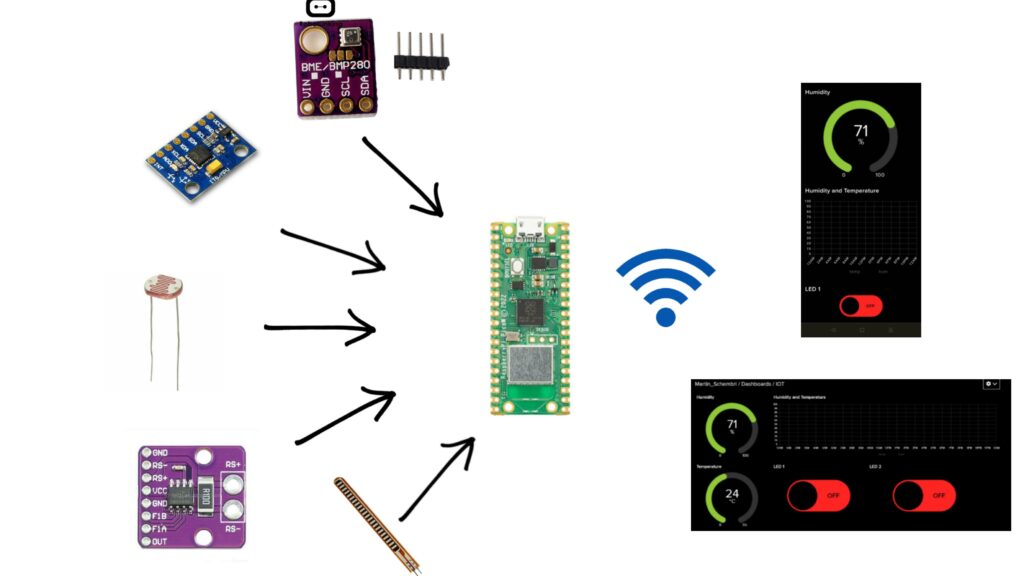A data acquisition (DAQ) system is an electronic system that measures electrical properties representing physical phenomena. This project mainly consisted in developing a system to measure a number of such phenomena, including (but not limited to): voltage, current, and resistance. The system was also devised to read serial data from digital sensors.
The circuitry was tested using a number of individual sensors, each responsible for providing measurements to a processing element ‒ in this case a microcontroller. Moreover, in order to qualify as a smart system, the device was connected to a network through a wireless protocol (Wi-Fi and MQTT) and allowed to act autonomously, up to an extent, while also storing data on the cloud.
The devised system consists of various sensors/transducers communicating with the low-cost, high-performance microcontroller board Raspberry Pi Pico W, utilising the RP2040 microcontroller chip. The processing element would communicate with the software as a service (SaaS) platform adafruit.io, through Wi-Fi and MQTT. The physical/analogue values that were measured were converted into a digital value using an analogue-to-digital convertor (ADC) to be processed by the microcontroller. The microcontroller would then transform the data to adhere to the MQTT and Wi-Fi protocol, enabling communication between the SaaS and the microcontroller.
The proposed system offers a distinct degree of flexibility. This enables compatibility with a large number of sensors, be they digital or analogue. Input flexibility is vital in adapting to any application as per the user’s requirements. Through the addition of a few external chips, the system would support expandability in channels and security, further satisfying the user’s needs. In addition, the system design allows for the user to operate it from a distance due to the inclusion of a remote connection. Finally, the configuration would require minimum maintenance, further increasing the level of convenience.
DAQ systems could be applied to a vast range of modern functions, ranging from daily monitoring of environments to high-end applications, such as cars, motorcycles and robotics. Commercially available smart DAQs tend to be expensive, but the proposed smart DAQ system is more cost-effective. Moreover, it is particularly convenient since it was designed to be controlled remotely to allow users wishing to monitor/control anything of interest to them through a device of their choice (mobile or computer).
In short, this project constitutes a low entry barrier for anyone seeking a DAQ system that is reliable, user-friendly, convenient, affordable and versatile.

Figure 1. Simplified schematic of the proposed system
Student: Martin Schembri
Supervisor: Prof. Ing. Edward Gatt
